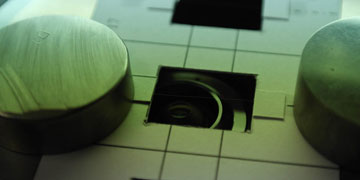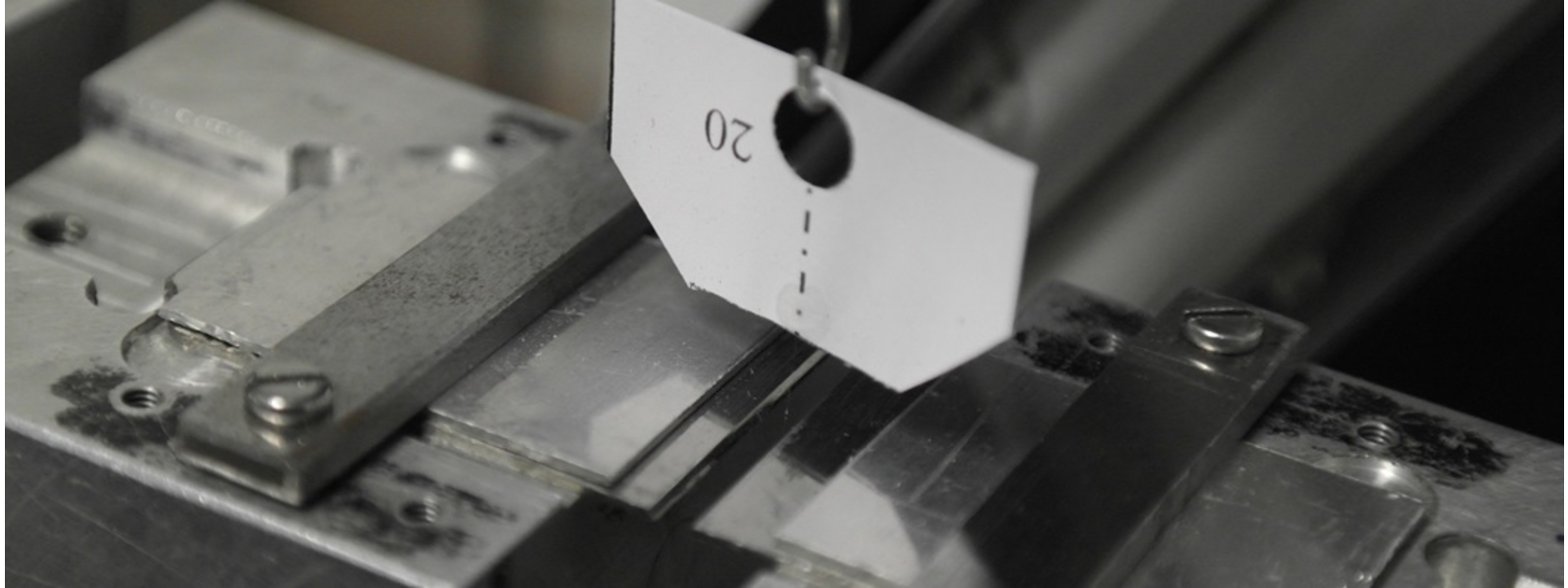
Advanced Composites GroupMicromechanics
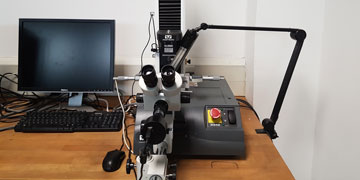
Instron 3342 mechanical tester
The Instron 3342 universal testing machine is a versatile low-load tensile tester that ACG has used extensively for characterisation of both fibre strength/strength distribution and of interfacial strength between fibres and polymers. It has a maximum load capacity of 0.5 kN or a smaller load cell of 10 N. Interfacial strength testing is achieved using a specially designed microbond testing rig, manufactured in-house.
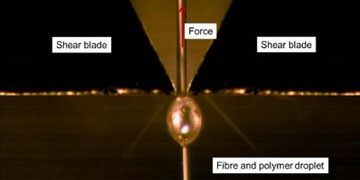
Microbond interfacial test
The inset picture shows the experimental set up of the microbond test, used to measure interfacial shear strength between a fibre and polymer droplet. A stereo microscope and micrometers are used to position the shear blades close to the fibre, just above the polymer droplet. The testing machine pulls the microbond sample with the fibre and polymer droplet up and the force to separate the fibre from the droplet is recorded until debond occurs.
Further details of this test method can be found in the literature: Yang, Liu and Thomason, J.L. (2010) Interface strength in glass fibre-polypropylene measured using the fibre pull-out and microbond methods. Composites Part A: Applied Science and Manufacturing, 41 (9). pp. 1077-1083. ISSN 1359-835X
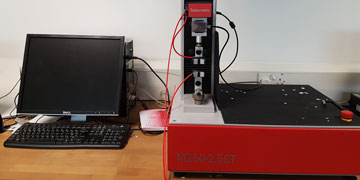
Testometric M250-2.5CT mechanical tester
The Testometric M250-2.5CT is used by the ACG exclusively for testing of single reinforcement fibres and fibre bundles. It can be equipped with either a 2.5 kN or 5 N load cell. Both load cells are supplied with pneumatic grips allowing quick and easy changing of samples.
Our capabilities can help further your research interests
Our research
Discover our areas of expertise in composites research - from the nano to the macro scale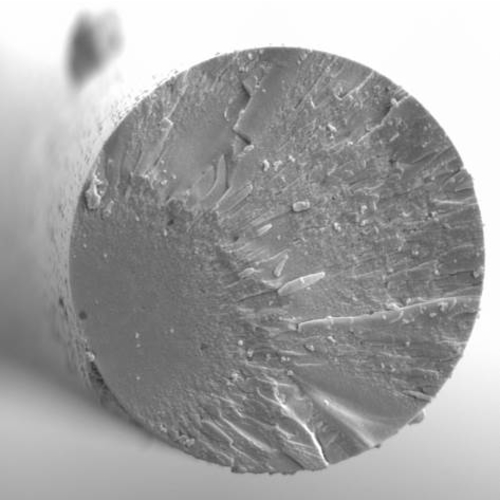
No. 1 most downloaded original paper from Composites Part A
